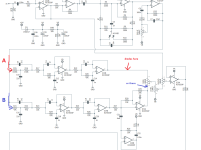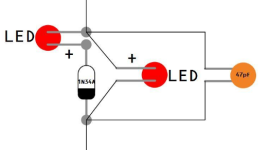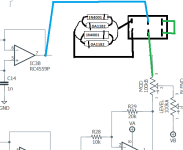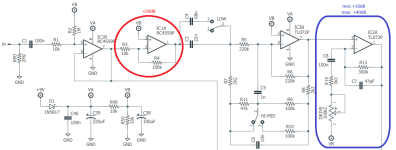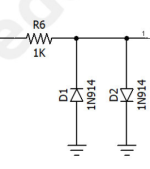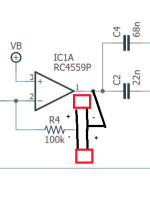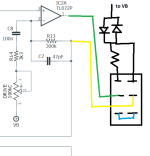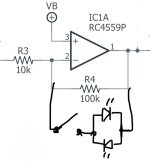eh là bas ma
Well-known member
I just finished building Aion's Empyrean deluxe project yesterday.
Surprised to see there aren't any diodes except a single 1n5817 for the power section.
I really like both distortions, but i'd like to try to add some toggleswitch somewhere with diodes, just out of curiosity, see how it sounds with led clipping, etc.
From what i can understand with the schematics, it looks like the gain stages for both distortions are built with five RC4559P ICs and one TL72,
but i struggle to get what are the two signal paths, and where i could connect a toggleswitch with diodes.
I suspect some extra diode clipping would be more interesting on the "raw" distortion, to make it a bit smoother.
It will be probably less useful on the first distortion, described as "punchy and tight".
Looking at the schematics, can you tell what are the two signal paths, and where would be the best location for some extra diodes ?
If i had to guess, i'd say the first distortion is made by the TL72, after R5. That would explain why it has more precision, it kind of sounds like a TL72 in its works.
Second distortion is made by five RC4559 cascading gain stages, 2 of them are also used with the last RC4559 to build the EQ at the end of the circuit.
The first RC4559 located at the beginning of the signal path is used to shape the signal before going into the gain stages, like an input buffer ?
...or maybe the first 4559 and the TL72 are just used for Hi-mid and Low switches, and boost the signal before the gain stages.
1st distortion starts at R15 and C9, 2nd starts at R21 and C15 ?
So a good spot to connect a couple of diodes would be between R29 and the Mod control (allowing to dial the balance between both distortions), before the Blend control ?
That way the diodes wouldn't impact the other distortion ?
Every observations and suggestions are welcome !
Surprised to see there aren't any diodes except a single 1n5817 for the power section.
I really like both distortions, but i'd like to try to add some toggleswitch somewhere with diodes, just out of curiosity, see how it sounds with led clipping, etc.
From what i can understand with the schematics, it looks like the gain stages for both distortions are built with five RC4559P ICs and one TL72,
but i struggle to get what are the two signal paths, and where i could connect a toggleswitch with diodes.
I suspect some extra diode clipping would be more interesting on the "raw" distortion, to make it a bit smoother.
It will be probably less useful on the first distortion, described as "punchy and tight".
Looking at the schematics, can you tell what are the two signal paths, and where would be the best location for some extra diodes ?
If i had to guess, i'd say the first distortion is made by the TL72, after R5. That would explain why it has more precision, it kind of sounds like a TL72 in its works.
Second distortion is made by five RC4559 cascading gain stages, 2 of them are also used with the last RC4559 to build the EQ at the end of the circuit.
The first RC4559 located at the beginning of the signal path is used to shape the signal before going into the gain stages, like an input buffer ?
...or maybe the first 4559 and the TL72 are just used for Hi-mid and Low switches, and boost the signal before the gain stages.
1st distortion starts at R15 and C9, 2nd starts at R21 and C15 ?
So a good spot to connect a couple of diodes would be between R29 and the Mod control (allowing to dial the balance between both distortions), before the Blend control ?
That way the diodes wouldn't impact the other distortion ?
Every observations and suggestions are welcome !
Last edited:


